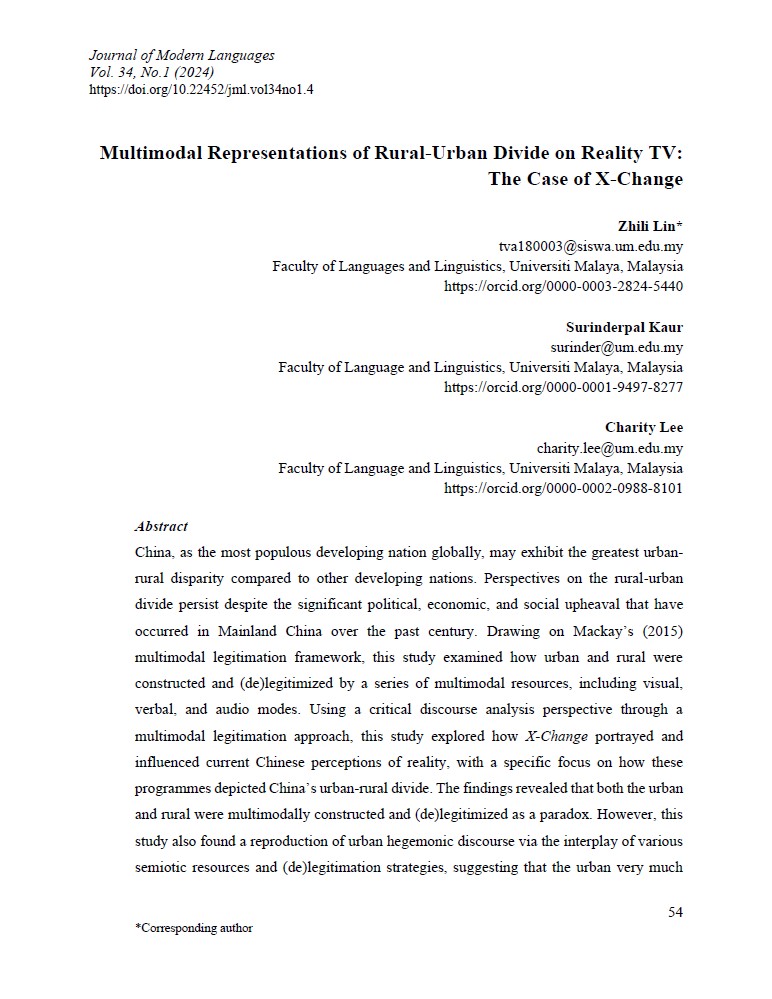Multimodal Representations of Rural-Urban Divide on Reality TV: The Case of X-Change
Main Article Content
Abstract
China, as the most populous developing nation globally, may exhibit the greatest urban-rural disparity compared to other developing nations. Perspectives on the rural-urban divide persist despite the significant political, economic, and social upheaval that have occurred in Mainland China over the past century. Drawing on Mackay’s (2015) multimodal legitimation framework, this study examined how urban and rural were constructed and (de)legitimized by a series of multimodal resources, including visual, verbal, and audio modes. Using a critical discourse analysis perspective through a multimodal legitimation approach, this study explored how X-Change portrayed and influenced current Chinese perceptions of reality, with a specific focus on how these programmes depicted China’s urban-rural divide. The findings revealed that both the urban and rural were multimodally constructed and (de)legitimized as a paradox. However, this study also found a reproduction of urban hegemonic discourse via the interplay of various semiotic resources and (de)legitimation strategies, suggesting that the urban very much forms the center of society in the context of contemporary China. These findings contribute to existing scholarship on the rural-urban divide in Chinese Reality Television (RTV).

